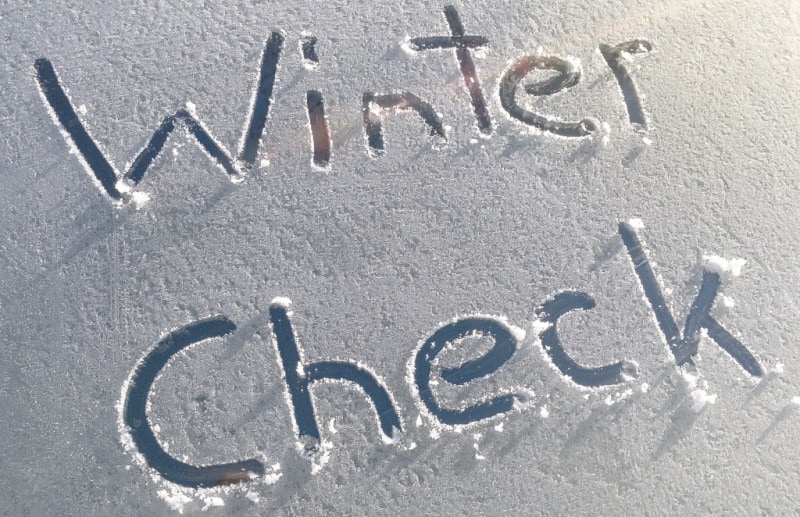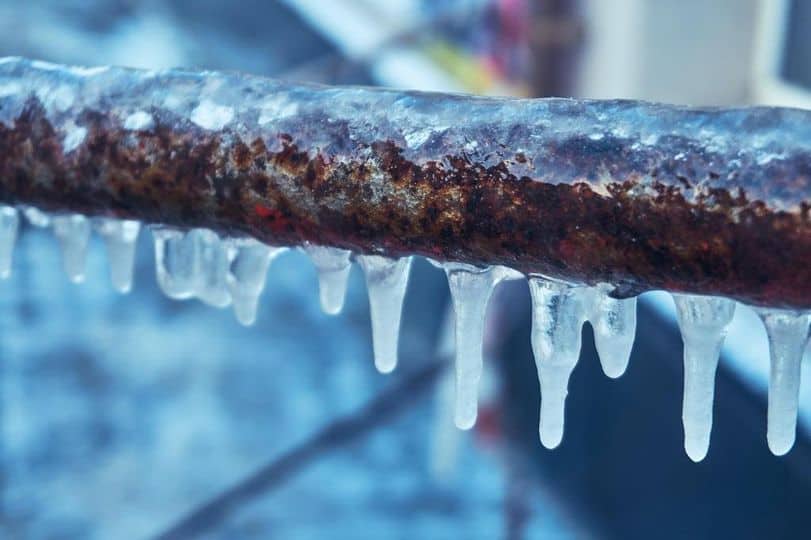Winterizing: Steps You Can Take & When to Call a Trusted Plumber

Keep a cool head & a warm checklist while proactively winterizing.
Homeownership comes with a lot of joys and quite a few responsibilities — winterizing is not the least of them. When it is your home, you’ve purchased a number of systems that must be maintained, serviced and, at times, updated. As cold weather approaches, this is particularly pertinent to your pipes and plumbing system, in general. This is true for the home you live in, a residence you may be renting yourself or to someone else, or a home you may own which is unoccupied. And, don’t forget about any office spaces you are responsible for.
Be proactive. It’s the defensive behavior property owners should adopt prior to winter’s wicked winds and temperatures. We know that when water freezes, it expands. That means when the temperature of the pipes in your home or workplace drops below 32 degrees — if only for a little while— a pipe can break open, or something even worse can occur. So, it’s up to us to plan ahead by taking precautions now to avoid headaches and high repair bills later.

What to look for outside while winterizing
Walk around the exterior of your home and take a good look at the foundation, crawl spaces, and all exterior areas. Check for any cracks or holes in the above-ground foundation. If you find a crack, mark it with bright electrical or duct tape or chalk. Use silicone caulk, mortar, or an expanding foam filler to seal any cracks.
Incorporate these steps into your winterizing to-do list:
- Eliminate any weeds growing against the home, and remove all leaves and dead plant matter to keep rot and mold away from your foundation.
- Seal any openings that provide possible entrance points for rodents.
- Close and secure cellar doors. Ditto this action for basements.
- Remove all hoses, such as garden hoses, from your home’s exterior spigots. While doing this, turn all spigots off, making sure of no leaks.
- Wrap your outdoor spigots to protect them from a freeze. With a discarded shirt or towel, folded in half lengthwise, wrap around the spigot and/or any pipes. After wrapping well, completely cover the fabric with a plastic bag, pushing the plastic firmly to the wall. Use duct or packing tape to hold the bag in place, then apply tape to the entire surface of the plastic bag. Your finished handiwork should look very much like what it is: an outdoor spigot neatly covered in protective wrap for the coming cold.
- Ensure that all exterior pipes are well-insulated. A burst pipe can cause tremendous damage to your home’s interior and can create mold, which is extremely harmful healthwise and can run into expensive repair costs. Also, look under sinks for any gaps or holes as these permit cold air and bugs into your living space. Relative to this, eliminate cold air and pests by filling all the gaps and holes with caulk. In the case of larger holes, you may use fiberglass insulation to fill the cavity.
- Wherever pipes receive a chilly blast of air, the scenario for freezing is created. To avoid a wind tunnel effect under your structure, close crawl space vents and fill openings with insulation. If your crawl space contains any pipes, wrap the pipes with heat wrap tape.
- Other fixtures or spaces that may need attention include downspouts, greenhouses, sunrooms, or other areas of the home that may have been added on after the original construction.

In the deep freeze
Steps for when the temperature dips below freezing: open cabinet doors to allow pipes to be exposed to warm air and turn faucets to a slight drip.
If you have pipes prone to freezing, you may want to use pipe insulation, pipe heating cable, heat tape or heat cord.
- Wrap pipes inside of exterior walls with foam-like pipe insulation, and wrap it securely with duct tape. Use the same method for pipes in unheated spaces—attics, crawl spaces, basements.
- For pipe heating cable, run the cable along the pipe rather than wrapping it around the pipe.
- Insulation will prevent the pipe from freezing by holding in the heat, Instead of allowing it to be absorbed by the surrounding air. Plus, insulation gives your water heater a break by keeping water in your pipes warmer longer.
- Please note that heat tape cannot be used with drain lines — such as your furnace condensation pump. Use foam pipe insulation in above-ground pipes.
- If your pipes freeze even after your efforts to winterize them, remember to give them time to slowly thaw out. The time lapse can reduce the possibility of a rupture.
Going away during winter?
If you plan on going away for a length of time during the winter, your first step is to turn off the main water valve. Drain, or flush, your outside faucet, and drain any other faucets, such as in the basement. A smart trick is to put a couple of cups of antifreeze or windshield wiper fluid (a liquid that will not freeze even in freezing temperatures) into all drains (except your potable water drain, your dishwasher, and washing machine). The liquid will drain down to the trap and will remain there, taking the place of ordinary water that might freeze in the trap and cause burst pipes.
Call a plumber when . . .
Anytime you have a plumbing emergency is, of course, a good time to call a plumber. Why wait until you are at the mercy of an emergency to get your home squared away for the winter season?
Some emergencies that often occur during winter months require professional expertise to ensure that the problem is resolved and to avoid further expense or a major repair. Be proactive by making a list of everything that needs to be serviced, insulated, or attended to. Tackle and cross off the DIY items, and call a trusted plumber for all the items that exceed your skill level.

Why is TapRooT® the top RCA training?
TapRooT® has been designed for investigating seemingly simple problems that could have been worse (precursor incidents) by using a simple 5-step process. TapRooT® can also be used to investigate major accidents by using the complete 7-step process.
- The 2-Day TapRooT® Root Cause Analysis Course teaches the essential techniques for investigating precursor incidents and fixing them to prevent major accidents.
- The Equifactor® Training Course also teaches how to use the TapRooT® techniques and Equifactor® troubleshooting tables to stop equipment problems.
- The 5-Day TapRooT® Root Cause Analysis Team Leader Course teaches the complete 7-step TapRooT® process and techniques to investigate major accidents, serious environmental releases, fatalities, major plant upsets, and serious injuries.
- See the TapRooT® complete selection of courses and webinars.



